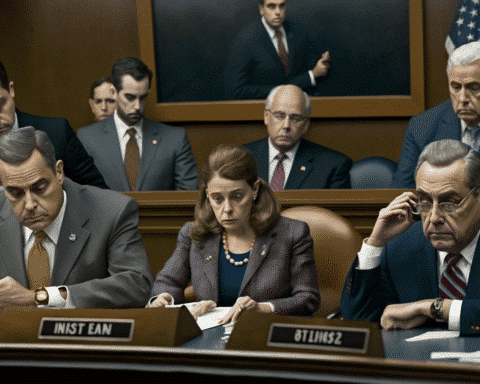Democrats are pushing for more judicial confirmations for President Biden, with some considering ending a 100-year-old Senate practice to achieve this goal.
The conflict over the so-called “blue slip” procedure is causing tensions in the Senate panel handling judicial nominations and has elicited strong warnings from Republicans about increasing partisanship in the judicial confirmation process.
This clash over Senate procedure could significantly impact Biden’s efforts to fill as many court vacancies as possible in the remaining two years of his presidency.
Whenever a judicial nominee is nominated, the Senate Judiciary Committee Chairman sends the senators representing his or her state a blue form called a “blue slip.”
A positive response on the blue slip signifies the senator’s approval for a nomination hearing, while a negative response or lack of response means the home state senator objects and can hinder the nomination.
Republicans disregarded the blue slip during President Trump’s presidency, leading to 17 times when appellate court nominees were considered without a positive blue slip.
Democrats, who were outraged by this, have made confirming judges a top priority as they seek to fill every seat possible, especially now that Republicans control the House and can block much of Biden’s legislative agenda.
Democrats are now abandoning blue slips for district judges, who handle federal civil and criminal cases as the first point of contact.
Advocates argue that fast action is crucial if Democrats want to match Trump’s success in his third year of the presidency when he secured over 100 judicial confirmations.
Additionally, they believe that if Democrats do not abandon the blue slip now, Republicans will do so when they return to the majority.
A representative from the Senate Judiciary Committee, Dick Durbin, has acknowledged the concerns voiced by progressives and has emphasized that During the Trump presidency, Democrats submitted 130 positive blue slips for district court nominees, while Republicans only submitted a dozen.
However, Durbin also wants to continue with the blue slip tradition, but with the caveat that it should not be used for discriminatory purposes to block nominees based on race, gender, or sexual orientation.
This has alarmed Republican senators, who view the blue slip as the last remaining tool for senators to have a say in consequential decisions in their state.
Senators withholding a blue slip has derailed the nomination of one Biden nominee for a district court.
A blue slip’s main purpose is to encourage collaboration and compromise, according to its supporters, but opponents contend that presidents will continue consulting senators about judicial openings regardless of the blue slip as they need senators’ support on other issues.
Democrats, determined not to let Republicans block district judges through the blue slip process as they did with appellate court judges during the Obama presidency, are bringing lessons learned from that time to the current debate.
The debate over the blue slip has reignited the larger discussion about the role of the Senate in the judicial confirmation process. Republicans view the blue slip as a crucial tool for senators to have a say in decisions that will impact their state for a lifetime.
On the other hand, Democrats believe that abandoning the blue slip for district judges is necessary for them to have the same success that Republicans had during the Trump presidency.
It remains to be seen what the outcome of this debate will be and how it will impact the remainder of Biden’s presidency.
As the president seeks to fill as many court vacancies as possible and solidify his legacy, the stakes are high. The outcome will also have far-reaching consequences for the future of the Senate and the judiciary.
The debate over the blue slip is a complex issue that involves questions of tradition, power, and politics. It highlights the ongoing struggle between Republicans and Democrats over the role of the Senate in the judicial confirmation process and the larger debate over the future of the federal judiciary.




